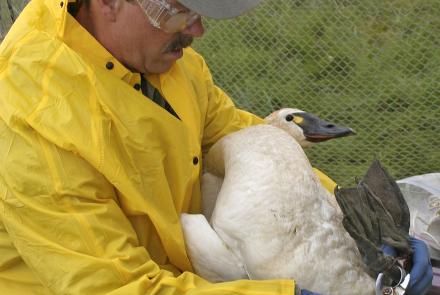Alaska's Cold Spell of January, 1989
For most people living in Alaska, January 1989 will be remembered as very cold. All four of our climatic zones felt the chill.
| Homer is a typical location in the maritime zone of southern Alaska, where the weather is usually moderated by the ocean. This time Homer had five days of new record low temperatures, and its lowest low during the cold snap--24 degrees below zero Fahrenheit--was a new absolute minimum for that location. For the intermediate zone between the sea and the interior, Anchorage weather is typical. During January's cold spell, Anchorage temperatures descended to -30oF, and two days set new record lows. Interior Alaska, where Fairbanks is the biggest town, has continental weather. Continental weather is usually marked by temperature extremes, and the cold certainly felt extreme enough. Perhaps because extremes are more common here. Fairbanks reported only one day that even tied the previous low record for that date---that was -51oF on January 30. Barrow is a typical location in the arctic zone. Here there were eight days of new record low temperature, with the minimum recorded at -50oF. |
| ||||||||||||||||||||||||||||||||||||||||||||||
In Nome, new low temperatures were observed for thirteen consecutive days. The only area of the state with a brief cold spell was Southeastern, where it was limited to the very last days of January. The Juneau low was -3oF, and no new minimums were set.
The cold air started to arrive in northern Alaska on January 9, setting in somewhat later over the rest of the state, January 11 was a pleasant day in McGrath, with a new record high temperature of +29oF (going by the 30-year period from 1950 to 1980, which is normally used as the standard). The next day the temperature fell to a low of -42oF. That 71-degree drop shows just how severely cold the newly arrived arctic air mass was.
Judging from official weather records at Fairbanks, the cold spell was severe but not record-breaking. More unusual were the low temperatures reported from the surrounding high ground. Normally during a cold spell in the Fairbanks area there is a very steep surface inversion--that is, the surrounding hills are substantially warmer than the valley floor. This time the differences in temperature up to 2000 feet were minor or nonexistent, and many people observed new absolute low temperatures at their homesites.
In the interior, the cold spell also was not of unprecedented length. Six other cases of similar duration have been observed over the last 40 years. It may have seemed unusual because the last severe cold spell hit Fairbanks a decade ago, and up to this one, the winters in the 1980s have been mild.
Elsewhere in the state, the story is more impressive. Not only did Nome set new low records for 13 days straight, new absolute minima were set at five of twelve randomly selected stations in Alaska. Bettles saw seven record low-temperature days, with a minimum temperature of -69oF; Bethel also had seven days with new lows, including a new record at -48oF. King Salmon's span of eight days with new record low temperatures included a lowest low of -47oF. McGrath measured the lowest official temperature with a chilly -75oF on January 27, and the highest minimum temperature there during a ten-day period was -58oF.
So it really was a big chill that occurred in Alaska, both in length and intensity. We can expect one like that only every few decades--we hope!




